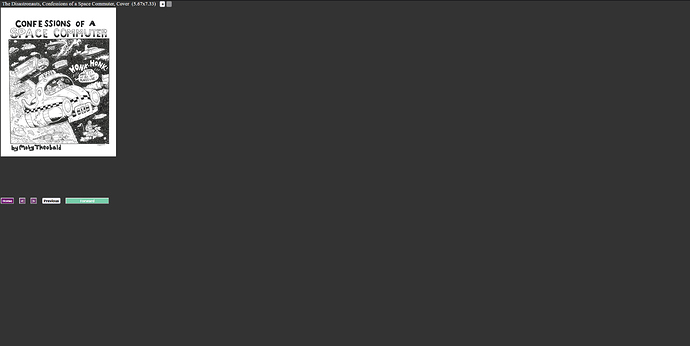This is maybe more Javascript than Java at this point? I’ve been working on a comic book viewer. There’s a lot to do still, but the main design goals I had seem to be working. Curious if anyone is willing to give it a go, give feedback.
My main design thought was to try to maintain a sense of the page. I saw one viewer that would expand each frame up to the entire screen, and even though the image was nice and large, not knowing what was around it kind of didn’t feel right for a comic-book reading experience, to me. Maybe others disagree?
The second design thought was to make the viewing as mindless as possible, so that one isn’t distracted from the story while trying to navigate the panels. So, I set things up where the viewer “advances” to the next view automatically when you click “Next” or hit or . Getting the viewer to make good choices was a bit of a geometric-puzzle challenge.
I’ve only implemented 4 zoom levels ("+" and “-” buttons on top, or ), and 6 viewer-portal sizes (code automatically attempts to ‘best fit’ the current browser dims, but at this point they are all landscape oriented). I want to also get some touchscreen controls working (drag for repositioning, swipes, pinches for zooming). Most of all this has been written with Javascript. Gritting my teeth and getting some experience working with it. (Many functions, and tests for those functions, has been very helpful.)
The Java part is the interaction with the database, where we have images and panels and their dimensions organized, and using the controller code for maintaining state when changing pages. I also made an auxiliary Java app for encoding the panel locations and ordering.
Eventually, the comic book author will have his own site with links to the viewer (it’s very bare bones at this point), so only those links will require a port# in the address.
Also, I’ve put very little creative effort into the GUI for the viewer. That is not something I feel particularly good about designing, in terms of the look.



